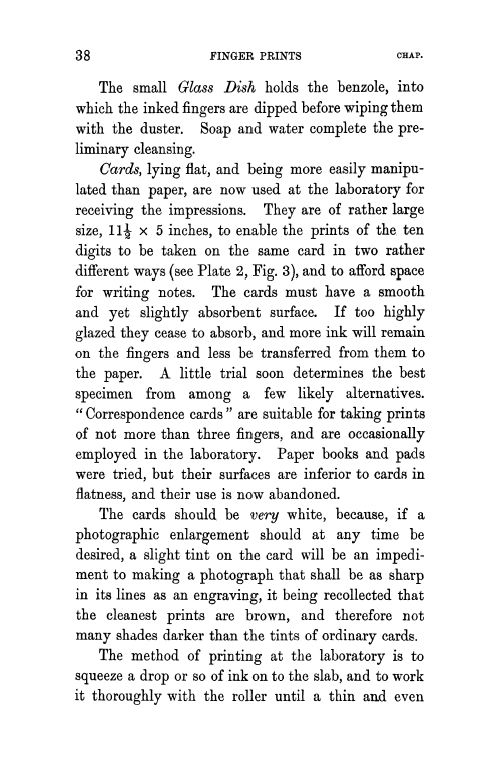| ||||||

OCR Rendition - approximate
3 8 FINGER PRINTS CHAP. The small Glass Dish holds the benzole, into which the inked fingers are dipped before wiping them with the duster. Soap and water complete the preliminary cleansing. Cards, lying flat, and being more easily manipulated than paper, are now used at the laboratory for receiving the impressions. They are of rather large size, 112 x 5 inches, to enable the prints of the, ten digits to be taken on the same card in two rather different ways (see Plate 2, Fig. 3), and to afford space for writing notes. The cards must have a smooth and yet slightly absorbent surface. If too highly glazed they cease to absorb, and more ink will remain on the fingers . and less be transferred from them to the paper. A little trial soon determines the best specimen from among a few likely alternatives. " Correspondence cards " are suitable for taking prints of not more than three fingers, and are occasionally employed in the laboratory. Paper books and pads were tried, but their surfaces are inferior to cards in flatness, and their use is now abandoned. The cards should. be very white, because, if a photographic enlargement should at any time be desired, a slight tint on the card will be an impediment to making a photograph that shall be as sharp in its lines as an engraving, it being recollected that the cleanest prints are brown, and therefore not many shades darker than the tints of ordinary cards. The method of printing at the laboratory is to squeeze a drop or so of ink on to the slab, and to work it thoroughly with the roller until a thin and even
|